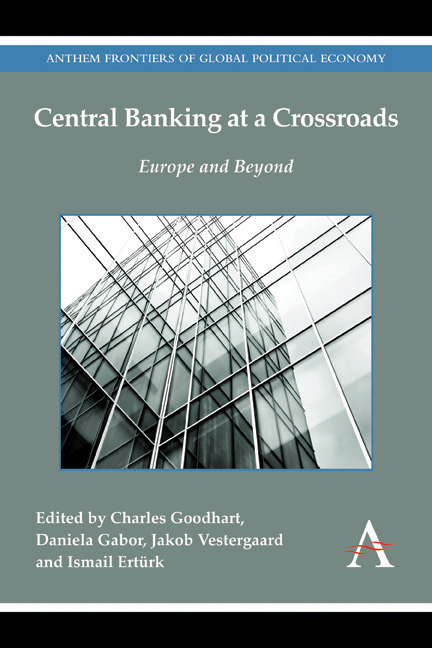Book contents
- Frontmatter
- CONTENTS
- Preface
- 1 Introduction
- Part 1 Bank Capital Regulation
- Part 2 Bank Resolution
- Part 3 Central Banking with Collateral-Based Finance
- Part 4 Where Next for Central Banking?
- 12 Central Banking Post-Crisis: What Compass for Uncharted Waters?
- 13 Reconceptualizing Central Bank Unconventional Policies: Long Positions on No-Growth Capitalism
- 14 The Relationship between Central Banks and Governments: What Are Central Banks For?
- 15 Is New Governance the Ideal Architecture for Global Financial Regulation?
- List of Contributors
- Index
15 - Is New Governance the Ideal Architecture for Global Financial Regulation?
from Part 4 - Where Next for Central Banking?
Published online by Cambridge University Press: 05 December 2015
- Frontmatter
- CONTENTS
- Preface
- 1 Introduction
- Part 1 Bank Capital Regulation
- Part 2 Bank Resolution
- Part 3 Central Banking with Collateral-Based Finance
- Part 4 Where Next for Central Banking?
- 12 Central Banking Post-Crisis: What Compass for Uncharted Waters?
- 13 Reconceptualizing Central Bank Unconventional Policies: Long Positions on No-Growth Capitalism
- 14 The Relationship between Central Banks and Governments: What Are Central Banks For?
- 15 Is New Governance the Ideal Architecture for Global Financial Regulation?
- List of Contributors
- Index
Summary
Introduction: Regulatory Pluralism and the Interrelationship of Legal Regimes
The central transnational regulatory challenge of the moment is how to manage large cross-border institutions that can jeopardize the health of the entire global economy. So-called global systemically important financial institutions (G-SIFIs) are cross-border institutions that are so large or interconnected that they are potentially too big to fail (TBTF). Equally importantly, such institutions are subject to multiple, overlapping, and even sometimes conflicting legal regimes.
From the legal perspective, the challenge G-SIFIs pose to global financial regulation is the problem of the interdependence of regulatory regimes in a global system that is inherently pluralistic. The threat of regulatory arbitrage that underlies much of the push for the harmonization of financial regulation is plausible only if legal regimes are sufficiently fungible and interconnected on the one hand, and yet sufficiently different in regulatory substance or approach on the other, that in some circumstances they can become viable alternatives from the market participants' point of view. Conversely, where markets are interconnected, one approach to regulatory oversight in one jurisdiction produces externalities in other regulatory regimes.
This article examines the way the international financial regulatory system is addressing this challenge, as exemplified by one of the prime organs of global financial regulation today: the Financial Stability Board (FSB). The G20 launched the FSB as its technocratic arm of policy creation and implementation in 2009, transforming an earlier organization. Its core functions and methodologies are coordination, standard setting, implementation of global standards, and identification and assessment of cross-border financial risks.
One cannot but be impressed with the sheer volume of initiatives the FSB has undertaken since its relaunch, and by the remarkable leadership, energy, and acumen behind these. In this article, I take the FSB as a target of critical analysis precisely because the FSB represents arguably the state of the art in international financial governance: it is an experimental, purposeful, and energetic institution that deploys the most innovative international financial regulation methodology today.
- Type
- Chapter
- Information
- Central Banking at a CrossroadsEurope and Beyond, pp. 245 - 264Publisher: Anthem PressPrint publication year: 2014

